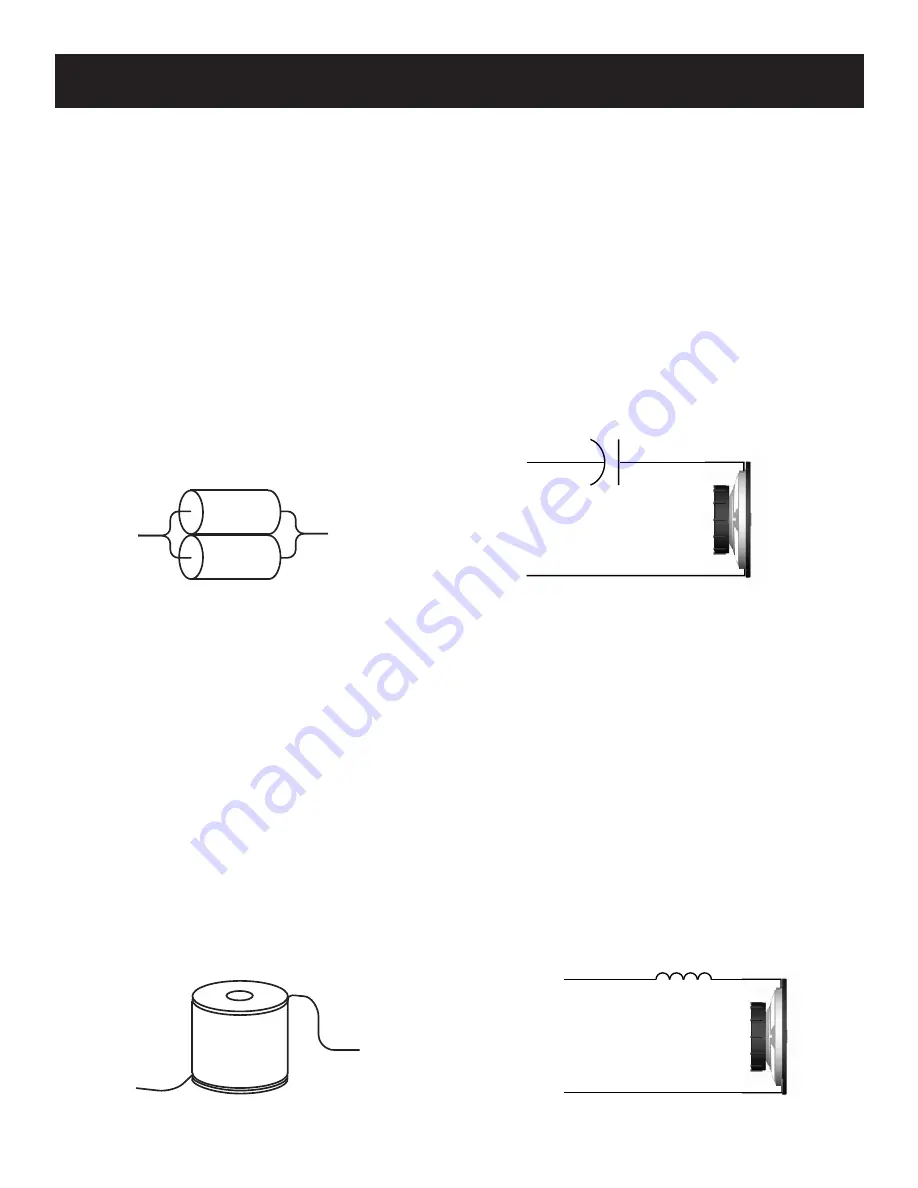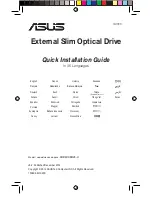
Passive Crossovers
Passive crossover networks come in different sizes and flavors. You must decide which one will work best for
your system. Here are some basics before you get started building a passive crossover network.
Capacitors:
A capacitor is known as a highpass filter, which simply means that at its crossover point (i.e. 2kHz) frequencies
HIGHER than 2kHz will pass through. Frequencies lower than 2 kHz will gradually become less and less audible.
When choosing a capacitor the voltage rating should be considered. A minimum rating of 50V is required.
Capacitors with higher voltage ratings will have the ability to handle more power.
A capacitor performs this task by changing its impedance as the frequency of the signal changes. The impedance
of the capacitor is small at frequencies higher than the crossover point. This is known as the passband range.
Frequencies BELOW the crossover point will cause the capacitor to have a gradual increase in impedance.
Consequently, this rise of impedance from the capacitor will cause frequencies BELOW the crossover point to
become less and less audible.
A capacitor’s value is expressed in farads and when placed in series with a speaker it forms a 6dB per octave high
pass.
100 MFD
100 MFD
Inductors:
Inductors, chokes or coils are known as Lowpass filters. Inductors are electrically opposite to the capacitor, and
their values are expressed in henrys. There are many different types of inductors: Air core, Iron core and Laminated
Steel are the most common. Air core inductors do not suffer from saturation (smearing in the audio signal) up to
their power handling limit but are more expensive due to the need for more copper wire for a given value. Iron
core or Laminated Steel core inductors can suffer from saturation as you approach their power limit but are less
expensive than an Air core inductor at the same value. Because inductors are low pass devices, frequencies LOWER
than the inductor’s crossover point (i.e. 100 Hz) will pass through. Frequencies HIGHER than 100Hz will gradually
become less and less audible.
An inductor performs this task by changing its impedance as the frequency of the signal changes. The imped-
ance of the inductor is small at frequencies LOWER than the crossover point. This is known as the passband range.
Frequencies HIGHER than the crossover point will cause the inductor to have a gradual increase in impedance.
Consequently, this rise in impedance from the inductor will cause frequencies HIGHER than the crossover point to
become less and less audible.
When an inductor is placed in series with a speaker, it forms a 6dB per octave low pass.
Highpass
C
C
6 dB/Octave Highpass
6 dB/Octave Lowpass
L
L
Choke or Coil (Inductor)
Lowpass
Kicker SSMB Series Midbass Drivers
Recommended Applications / Version 2.0
Page 7








































